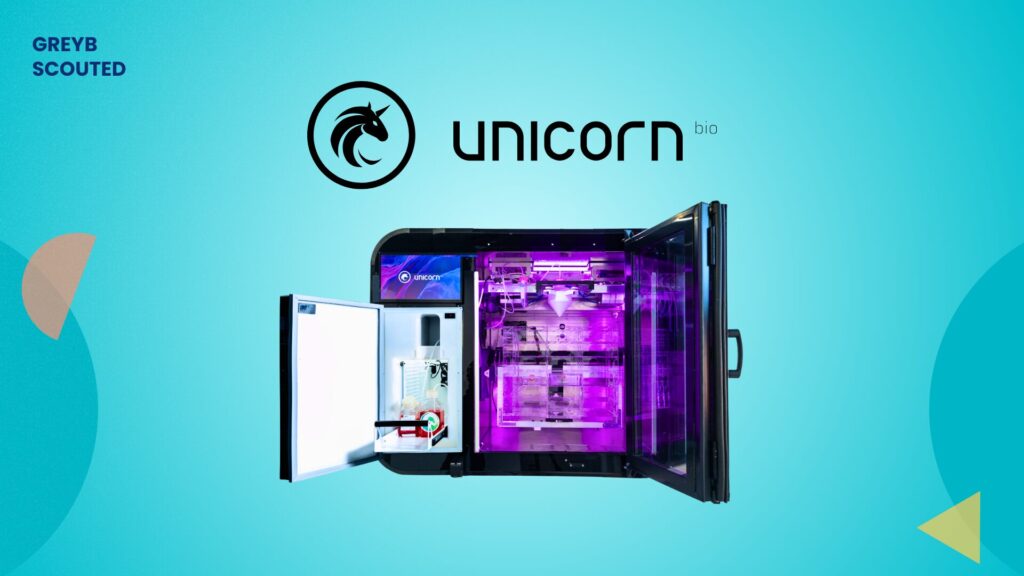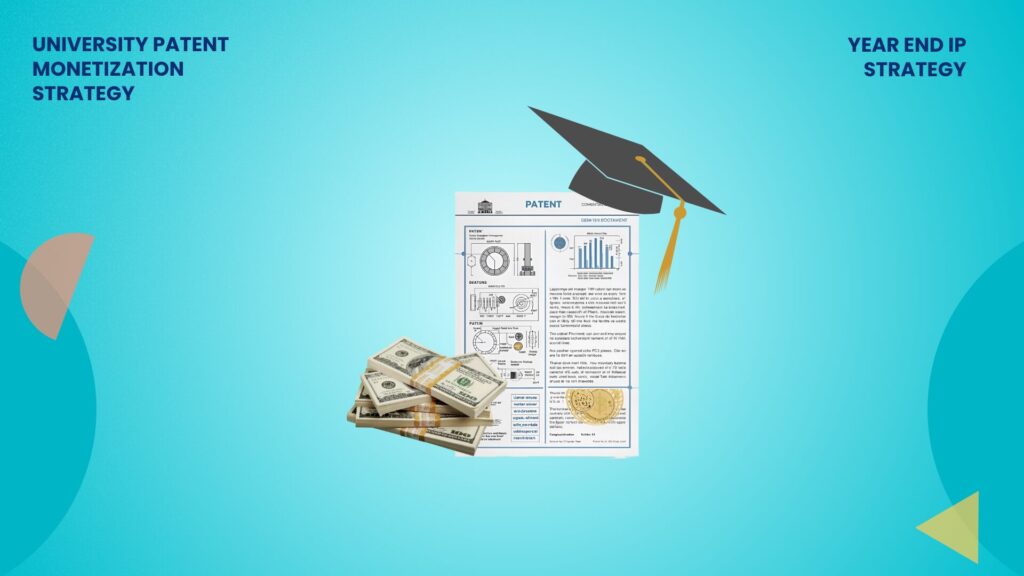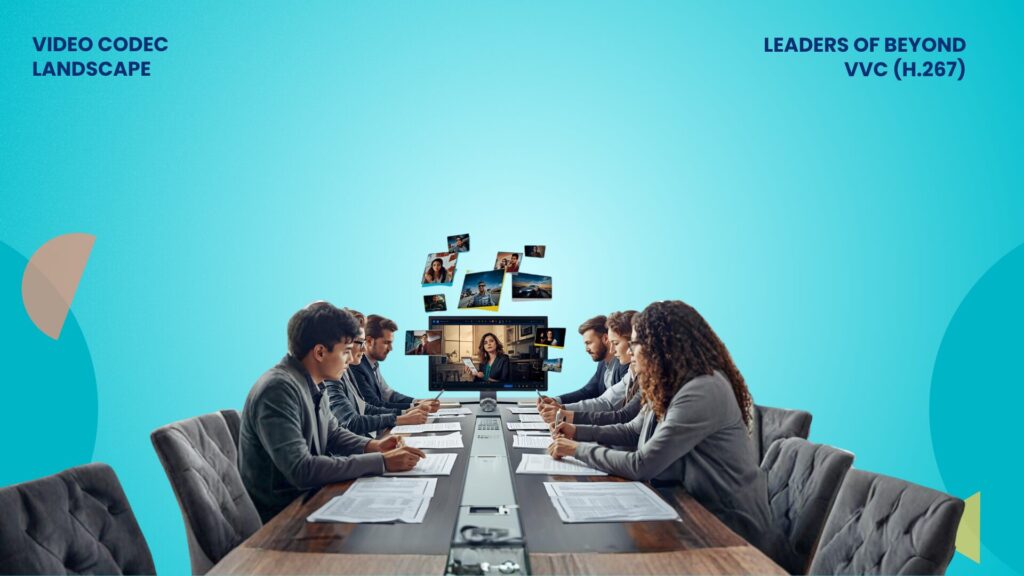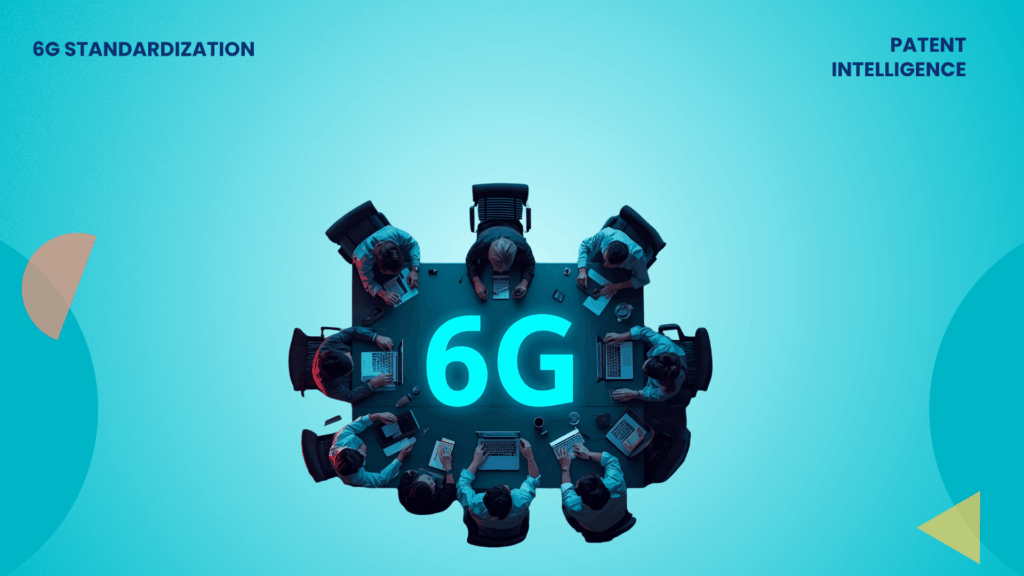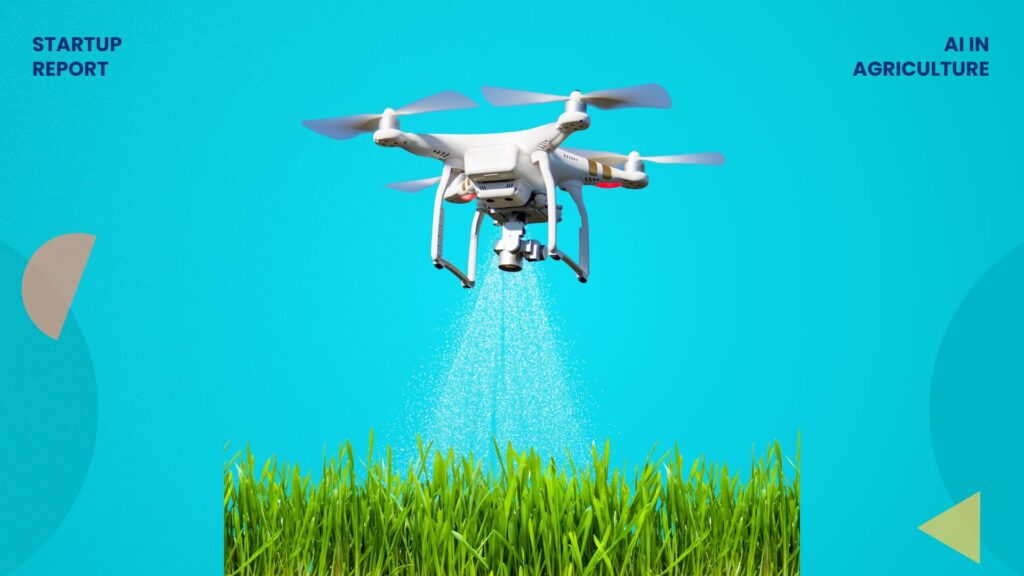According to IAM Media and WIPO data, fewer than 30% of patent disputes result in a court ruling, while nearly 70% are settled through negotiation stages. Yet these negotiations frequently unfold amid uncertainty, with patent holders, especially practicing entities and startups, struggling to assign monetary value to their portfolios. Emotional bias, poor preparation, and legal nuances across jurisdictions only complicate the process.
In this episode of GreyB Talks, Stephan Nößner, a German and European patent attorney, pulls back the curtain on what truly drives IP deal-making. He argues that the strength of a patent alone seldom seals the deal. Instead, it’s strategic timing, a clear grasp of the counterparty’s position, and a tailored approach to negotiation that matter most.

Stephan Nößner is a seasoned German and European patent attorney with deep expertise in IP valuation, licensing negotiations, and strategic IP management. Stephan currently leads licensing initiatives at a leading MNC, where he works closely with OEMs, Tier 1 suppliers, and startups across global markets.
With a PhD in applied physics and a legal background that spans the complexities of European, U.S., and Chinese jurisdictions, Stephan brings a unique, cross-functional view to how patents translate into real commercial value.
From emotionally charged licensing talks to the growing influence of the Unified Patent Court (UPC), Stephan shares candid observations that span legal, commercial, and technical domains. His advice is grounded in real-world experience and offers a sharp roadmap for IP owners looking to turn intangible assets into powerful, value-generating tools.
Key Highlights of the Discussion
- Negotiation outcomes often outweigh the technical strength of a patent. Even expiring or vulnerable patents can yield licensing revenue when positioned with strategic timing, contextual leverage, and pressure from looming deadlines.
- Licensing strategies must adapt to the counterparty’s nature. Startups value future upside and flexibility, NPEs respond to speed and pressure, and large corporations require structured, risk-averse engagement with the right internal champions.
- European jurisdictions, especially the Unified Patent Court (UPC), are regaining relevance. With its fast decision-making and broad enforceability, the UPC is becoming a strategic enforcement venue for IP holders seeking impactful injunctions.
- Exclusive licensing offers simplicity but increases dependency. Practicing entities often avoid exclusivity to preserve operational freedom, while non-practicing entities favor it for quicker and cleaner monetization.
What role does negotiation play compared to patent strength?
Stephan:
Negotiation often matters more than the patent itself. We had a case involving an old patent that was about to expire in just a few months. If we had gone into litigation, we wouldn’t have had a decision in time because the patent would have run out before any real progress could be made. Filing an invalidity claim with the office or pursuing a case in court can take years. So whether the patent was strong or not became irrelevant in that moment. Through negotiation, we were still able to strike a deal. That showed me again that the true value lies in the context, the timing, and how you position the asset, not just in its legal strength.
This is why I always say to bring your strategy to the table, not just your IP. It’s not only about enforcing rights but about finding solutions that both sides can live with, especially when neither party wants to wait years or spend significant amounts to reach a decision that may or may not arrive. You have to look for common interests and realistic paths out of the situation. In this case, it wasn’t even clear whether the patent would be held valid or if it would substantially impact the opposing product. But that didn’t matter in the short term. What mattered was the willingness to negotiate and manage risk effectively.
If you look at the data, fewer than 30 percent of cases actually end with a court decision. Most are resolved through negotiation, either before court or during proceedings. Even the cases that are filed often do not go all the way. This reinforces the idea that negotiation is not a fallback. It is the primary mode of resolution in most IP disputes.
What is the biggest mistake IP owners make in negotiations?
Stephan:
The biggest mistake is poor preparation. I see it all the time. IP owners enter negotiations without a complete understanding of their portfolio, without clarity on the strength of their patents, and without knowing if the timing is right to monetize. Sometimes, they are not even sure whether it is the right moment to enforce or license. Without that clarity, they end up reacting to the process instead of controlling it.
Preparation means knowing more than just what you own. It means understanding the specific situation of the party you are approaching. A patent’s value is not universal. It depends on the other side’s products, their market exposure, and their financial standing. You need to ask yourself what your IP is worth in their world, not just yours. Can they pay for it? Would they want to? Pricing needs to be thought through with their business in mind.
It is also crucial to analyze their patent position. If you skip this, it can backfire. They might have strong counter assets or legal leverage that you did not anticipate. In some cases, you might end up regretting even making contact. That is why every negotiation must begin with a clear strategy. You need to understand your position and that of your counterpart, and then carefully plan whom to approach, how to approach them, and when to do so. Without that, you are not negotiating with purpose. You are just hoping things go your way.
How do you approach deals with startups versus large corporations or NPEs?
Stephan:
The strategy changes significantly depending on who you are negotiating with. Startups, for instance, offer a very different landscape. You typically have direct access to top decision-makers, which speeds up communication and decision-making. However, their financial capacity is usually limited. They often lack immediate cash flow and are focused on the future. So, the deal structure should reflect that. I lean toward royalty-based or milestone-based models that tie payment to future performance or success. That way, it becomes a win-win based on their growth potential.
Non-practicing entities have an entirely different motivation. They are focused on monetization and quick returns. With NPEs, I usually try to apply pressure early and frame negotiations around past damages. They are not interested in long-term relationships or future potential. The priority is extracting value quickly. So my focus is on timing, positioning, and maximizing pressure within a short window.
Large corporations require a more nuanced approach. They have more to lose and are often cautious. These companies operate through multiple layers of decision-making, and just identifying the right person to speak with can take a lot of time. If you approach the wrong individual or department, the process may stall for months. These corporations also carry the risk of counterclaims or reputational concerns, so the tone of the approach matters. You have to carefully assess how aggressive to be and make sure you have mapped out internal hierarchies beforehand. If you are not prepared with the right strategy and connections, you may find yourself stuck before negotiations even begin.
What do most people misunderstand about licensing?
Stephan:
They assume it’s about getting the highest price. But licensing is also about timing, relationships, and risk management. You have to understand the other side’s perception of value. Sometimes that means pricing low to close fast, sometimes it means holding firm. And remember: your opening offer isn’t your final deal. Leaving space to move is important.
How does injunction strategy vary across regions?
Stephan:
Injunctions were once a powerful tool in the U.S., particularly for non-practicing entities. But since the eBay decision, the situation has changed dramatically. That ruling made it far more challenging to secure injunctions, particularly if you’re not a practicing company. As a result, the legal strategy in the U.S. has shifted. Instead of pushing for injunctions, many parties now focus on recovering past damages. And those damages, especially in the U.S., can be substantial. However, this shift has also meant that the leverage non-practicing entities once had in negotiations has weakened.
In contrast, Europe is currently seeing a very different trend with the emergence of the Unified Patent Court, or UPC. The UPC has begun delivering swift decisions, often within a few months, and can issue injunctions that apply simultaneously across all 18 member states. That is a massive shift. Investors are closely watching this development because it reintroduces the pressure that once existed in the U.S. If this trend continues, we could see a gradual shift in infringement litigation strategy from the U.S. to Europe.
The UPC’s patent-friendly judges and efficiency have made it a more attractive forum for high-stakes litigation. For many, this is not just about legal outcomes; it is also about market leverage and return on investment.
How do US, German, or Chinese stakeholders value the same portfolio?
Stephen:
When it comes to how stakeholders value IP globally, there are stark differences. Chinese companies, for instance, have traditionally focused on domestic portfolios. A strong Chinese patent base was once seen as sufficient. But that is changing. Many are now thinking globally, recognizing that IP protection abroad is essential for competing in and expanding into international markets. Meanwhile, in Germany, we tend to view patents from a very technical perspective. We analyze them deeply for their technological merit and alignment with a company’s business.
In the U.S., the mindset is quite different. The focus is on whether a patent can lead to a successful infringement claim. It is more about how much pressure the patent can exert, what kind of damages it can pull in, and how likely it is to sway negotiations or court decisions. That is the core metric for value there.
There are also cultural factors at play in negotiations. German stakeholders, for example, often prepare meticulously, run detailed valuations, and expect the opposing party to appreciate that logic and agree to it. But that is rarely how negotiations work in international settings. Americans, on the other hand, treat negotiation as a game. They might throw out wildly high numbers and gauge reactions. This playful approach can throw off those who expect linear reasoning. Germans might see such tactics as unfair or irrational. Still, the reality is that successful negotiation requires adapting to the mindset of the other party, not just presenting your reasoning.
In China, negotiation styles differ. They are not as aggressive as the U.S., but they are also very cautious and strategic. They often have a watchful approach, carefully weighing every statement for potential risks or benefits. So, across regions, both legal frameworks and negotiation cultures differ significantly. To succeed, you need to adapt your strategy to the region, not just legally, but also in terms of communication and cultural expectations.
What trends are emerging in how investors approach patents and innovation-heavy industries today?
Stephan:
There is a strong wave of investor interest in technologies like artificial intelligence, particularly large language models. A substantial portion of recent funding has been allocated here, possibly exceeding 50 percent. Major companies are actively pursuing this direction, and we are doing the same. What makes this area especially intriguing is the evolution of the patent landscape. Filing patents in fast-moving technologies like AI is challenging because the market and applications shift quickly. It will be fascinating to see how these patents hold up in the event of future disputes.
Another area attracting significant investor attention is quantum computing. It is one of the most talked-about spaces today. However, what excites me even more is robotics, especially when combined with artificial intelligence systems. While the physical hardware already exists, the capabilities of these machines are improving significantly with the integration of better AI. This combination is where I see some of the most exciting innovation happening right now. Investors are clearly moving into this space as well.
Are investors influencing the evolution of licensing models, such as pushing for subscription-based licensing or patent stacking solutions?
Stephan:
From what I have observed, investors are not the ones pushing for changes in licensing structures. Patent stacking is a greater concern for licensees, particularly in sectors such as network technologies. For example, if a company wants to include a single chip in a car, it often has to obtain licenses from ten or more different patent holders. Even after securing those licenses, there is no guarantee that someone else will not come forward with a claim. This situation creates a lot of uncertainty and inefficiency for companies.
Some licensing programs are trying to simplify this process, but investors do not necessarily drive those efforts. Investors primarily look for value. Their main interest is in financial return, not in the specific way intellectual property is monetized. Of course, the methods of charging for licenses evolve over time. In the software world, it is now common to see monthly subscriptions or per-seat licensing instead of one-time payments. In the best scenarios, especially when negotiations are done well, revenue-sharing models can also be used.
Ultimately, how a license is structured is determined on a case-by-case basis. The approach depends on the specific technology, the players involved, and the negotiation strategy. Investors may benefit from the outcomes, but they are typically not the ones directly shaping these licensing structures.
How do you see AI impacting IP evaluation and licensing workflows today?
Stephan:
I think that’s actually one of the easier questions. If used correctly, AI can be helpful in nearly every aspect of intellectual property. Whether it’s patent licensing, portfolio analysis, or even patent drafting, AI has something to offer. But it all comes down to expectations. Many people believe that if they enter a prompt into an LLM, they’ll instantly get a perfect result. That’s usually where disappointment begins. The more complex the task, the less likely the outcome will meet your expectations on the first try.
What impresses many is how quickly and fluently these tools generate text. But when you really analyze the output, you’ll often find inaccuracies or irrelevant details. Still, if you use AI in the right way, step by step, with human judgment layered in, it can drastically speed up and improve your work. For example, in dealing with large patent portfolios, AI is particularly helpful in clustering and segmenting patents by technology. What used to take months or years can now be done far more efficiently using AI-based text extraction and classification.
AI also works well in identifying potential infringement cases within large datasets. And yes, it can assist in patent drafting too. Not by replacing the drafter, but by offering suggestions, formatting assistance, or automating repetitive parts of the process. I’ve personally tested many tools and continue to do so. The progress is rapid, and I believe more automation is coming soon, especially for routine inventions and invention reports.
How do you see the licensing world and patent system evolving in the next 10–15 years?
Stephan:
A lot will depend on how case law develops, particularly in relation to the UPC. The volume and outcome of infringement cases in that court could significantly shape the future of licensing. If the UPC continues to operate efficiently, it may establish new standards and shape the development of IP strategies worldwide.
What I see is growing awareness around licensing as a revenue model. Investors are paying attention, especially in Europe. If early cases prove successful, that momentum will likely continue. And that could bring more attention and activity to the licensing space in general.
Closing Thoughts
“If there’s one thing I’d change about IP licensing, it’s the pace. A decade-long negotiation drains everyone involved. What we need is a system that delivers outcomes within a year, like the UPC is starting to do. When decisions come faster, energy stays high, strategies stay focused, and resolutions become more meaningful. That’s the future I want to see.”
— Stephan, European Patent Attorney
Stephan’s insights peel back the layers of IP licensing to reveal a world that’s far more dynamic and context-driven than most realize. Rather than defaulting to litigation, he emphasizes the art of preparation, timing, and tailoring strategies based on the counterpart, be it a startup, corporation, or NPE. From the influence of evolving court systems like the UPC to the growing investor interest in AI, robotics, and quantum, the landscape is shifting quickly and globally.
Meet our host – Harshit Singh, Innovation & IP Strategist at GreyB

Harshit Singh works at the crossroads of emerging technologies and intellectual property. He collaborates with R&D leaders, innovation teams, and IP professionals to uncover white spaces, identify disruptive technologies, and translate complex data into strategic decisions.
At GreyB, Harshit has led cross-functional research engagements across industries like chemicals, food, consumer goods, and energy—helping clients not only stay ahead of innovation curves but also align their technology bets with robust IP strategies.
Negotiating under pressure, identifying the right moment to license, or avoiding blind spots, all require more than strong patents. GreyB’s licensing team supports you with in-depth patent analysis, counterparty mapping, and value-based deal structuring.
Let’s Structure your Next Licensing Win
Connect with a Licensing Expert




